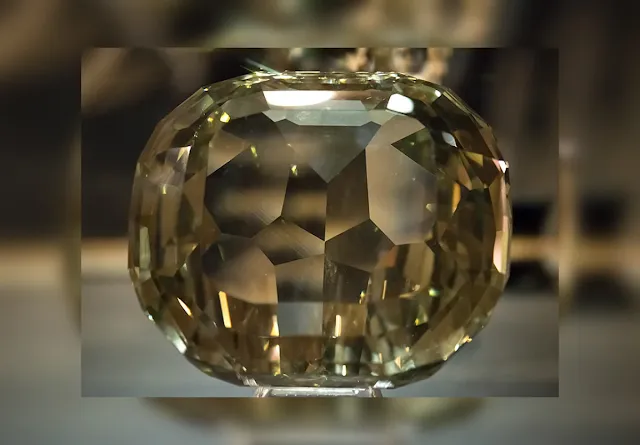American Golden Topaz
The American Golden Topaz is one of the largest faceted gemstones in the world and the largest cut yellow topaz ever crafted. Weighing an extraordinary 22,892.5 carats (4.6 kilograms; 10.1 pounds), the flawless golden-yellow crystal was cut into a 172-facet gem from a much larger rough specimen originally weighing about 26 pounds (11.8 kilograms). Today, it is displayed as a centerpiece in the Smithsonian Institution’s National Museum of Natural History in Washington, D.C.
 |
| American Golden Topaz, 22,892.5 carats. |
Origin and Cutting
The rough topaz was mined in Minas Gerais, Brazil, a region renowned for producing gem-quality topaz, aquamarine, and tourmaline. The cutting process was a monumental task led by Leon Agee of El Paso, Texas, requiring two years of planning and 22 months of cutting and polishing. The gem was completed in 1980.
Smithsonian Donation
In 1988, American businessman and philanthropist Sid Kass donated the finished stone to the Smithsonian Institution, where it was named the American Golden Topaz. It has since become one of the museum’s most popular gemstone exhibits, frequently featured in books, documentaries, and gemstone displays.
 |
| American Golden Topaz. |
Value and Significance
While ordinary gem-quality topaz typically sells for $10–$50 per carat, a stone of this size and perfection cannot be valued by weight alone. Its importance lies in its rarity, size, craftsmanship, and cultural significance. As one of the world’s great gemstones, its worth is considered priceless.
The Smithsonian also holds two of the largest uncut topazes: the 32-kilogram Lindsay Topaz and the 50-kilogram Freeman Topaz, which highlight the immense size crystals of this mineral can reach.
 |
| Giant Topaz Crystals of 111 Lbs |
About Topaz
Topaz is a silicate mineral of aluminium and fluorine with the formula Al₂SiO₄(F,OH)₂. It ranks 8 on the Mohs scale, making it one of the hardest naturally occurring minerals after diamond, corundum, and chrysoberyl. Its density ranges from 3.5 to 3.6 g/cm³.
Topaz occurs in a wide range of colors—yellow, blue, pink, orange, and brown—caused by trace impurities. For example, iron produces blue hues, while manganese yields pink shades. Geologically, topaz forms in igneous rocks such as granite and rhyolite, in hydrothermal veins, and in metamorphic environments where minerals are altered by heat and pressure.
Legacy
The American Golden Topaz is more than a gemstone—it is a symbol of geological wonder and human craftsmanship. Its combination of Brazilian origin, American cutting expertise, and Smithsonian stewardship ensures its place among the most celebrated gemstones in the world.
See also: Topaz: Types and Colors
Mystic Topaz: Enhanced Brilliance








